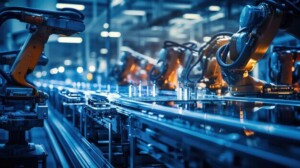Ball bearings might not be the flashiest industry. But these parts are everywhere. From cars and industrial machines to medical devices and robotics they keep things moving—literally. And in 2025 the industry is shifting fast.
More demand.
New technologies.
Changes in how and where bearings are used. Let’s talk about what’s happening, what’s next, and what it all means for businesses like yours.
Market Growth: The Numbers Tell the Story

In 2024 heading into 2025 the global market was worth $6.84 billion. By 2032 it’s expected to hit $12.15 billion—a 7.6% CAGR.
Another estimate pegs it at $41.8 billion in 2024 and growing to $43.96 billion in 2025 at a 5.2% CAGR. Different numbers but the message is the same: this industry is expanding.
The demand is coming from industrial automation and robotics at its core—but challenges like shifting global trade, and supply chain disruptions play a role too. Changing manufacturing needs are reshaping the industry from the ground up.
Not all markets are growing at the same speed.
Asia-Pacific
Leading the industry.
China and India are driving demand, thanks to booming manufacturing and infrastructure projects.
The region is also a major hub for EV production, which is fueling demand for high-efficiency ball bearings.
United States
The US market expected to reach $6.3 billion in 2025.
But the U.S. ball bearing industry has actually declined at a 2.5% CAGR since 2020.
Fewer manufacturers, and global competition is stiff.
Europe
Electric vehicles are reshaping demand for ball bearings in Europe.
Schaeffler (a major German machine and car parts maker) predicts a -14% to -17% margin in its e-mobility unit for 2025—showing that shifting to EV production is no easy task.
This isn’t just about bigger numbers. The ball bearings market is changing in real ways. Here’s how.

EVs Are Reshaping Demand
Electric cars don’t use as many moving parts as traditional gas-powered cars. That means fewer bearings in some areas. But more demand for high-precision/low-friction bearings in electric motors.
Ball bearing manufacturers are adjusting. They are focusing on lightweight materials, ceramic coatings, and low-friction designs to maximize efficiency in electric motors.
Factories are getting smarter. Robots and automated machinery all need high-performance bearings that can handle constant movement. Not to mention the heat and the stress.
Companies investing in automated manufacturing are a big driver of growth.
Miniature ball bearings are becoming essential in medical devices, drones, and robotics.
This market is set to grow from $2.19 billion in 2025 to $2.91 billion by 2029. More automation = more demand for high-precision bearings that keep tiny devices running without a hitch.
Bearings last a long time but manufacturing them isn’t always kind to the planet. That’s changing.
More companies are focusing on energy-efficient production and longer-lasting designs. Some are even creating self-lubricating bearings to reduce maintenance and waste.
Expect tighter environmental regulations in the coming years forcing manufacturers to adapt or fall behind.
The ball bearings industry is growing. But it’s also changing.
Demand is shifting to automation and robotics. Materials and designs are evolving. Sustainability is becoming non-negotiable. And manufacturers who stay ahead of the trends will come out on top.
Looking for high-quality bearings that match the needs of today’s industries? Check out NSAR bearings. We help businesses get the right bearings and build for the future.
Copyright © NSAR Bearings. All rights reserved. Privacy Policy